In the world of event marketing, every handshake, keynote, and attendee interaction is a potential content goldmine. But how do we, as event professionals, transform fleeting moments into lasting marketing momentum? The answer lies in a robust, ROI-driven strategy built on proven content marketing best practices. Gone are the days of simply hoping for post-event buzz. Today, success is engineered. It’s about strategically capturing the energy of a live experience and converting it into measurable assets that build brand affinity, generate qualified leads, and prove the value of our event spend.
We're not just creating content; we're designing experiences that become content. From AI-powered photo booths that turn guests into brand ambassadors to interactive surveys that personalize every touchpoint, the technology exists to weave content creation directly into the event fabric. This approach allows us to collect authentic, user-generated assets in real time, fueling our marketing efforts long after the event concludes.
1. Know Your Audience and Create Buyer Personas
The most fundamental of all content marketing best practices is to deeply understand who you are creating content for. Without a clear picture of your audience, even the most well-crafted message will fail to connect. This is where buyer personas come in. They are detailed, semi-fictional representations of your ideal customers, built from real data and strategic insights.
A persona goes far beyond simple demographics. It documents your ideal customer's professional role, daily challenges, primary goals, and critical pain points. Understanding these details allows you to create content that speaks directly to their needs, positioning your brand as a helpful and essential resource. Think of it as the difference between shouting into a crowded stadium and having a focused conversation with the exact person you want to reach.
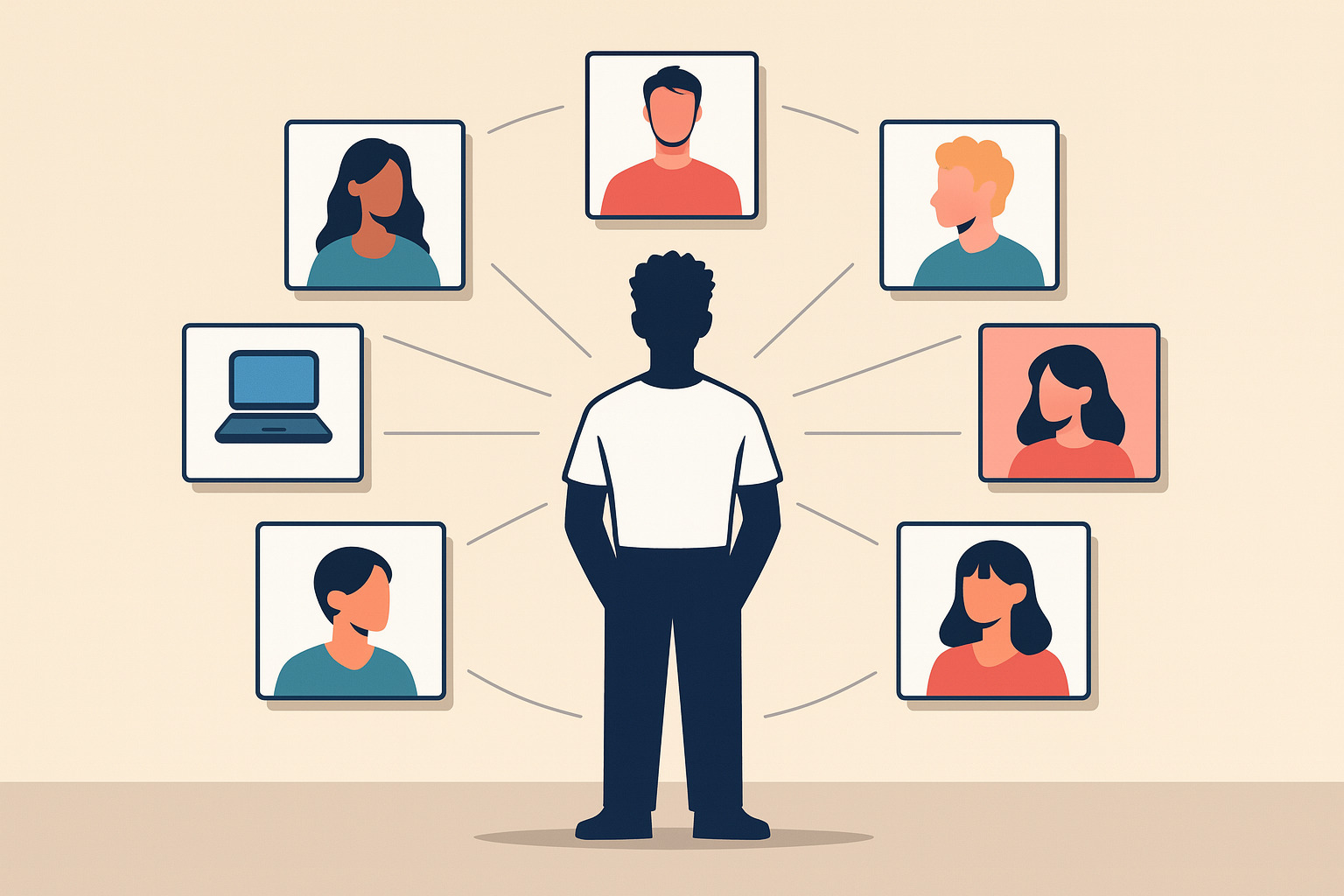
Why Personas Are Crucial for Event Marketers
For those of us in the event marketing space, personas are non-negotiable. An event producer planning a national sales kick-off has vastly different content needs than an HR leader organizing a virtual employee appreciation event. One may be looking for ROI calculators and case studies on brand engagement, while the other needs ideas for remote team-building and inclusive virtual activities. Creating targeted content for these distinct audiences is key. For example, a campaign targeting conference planners might focus on how our AI photo booths generate leads and track engagement, while content for HR managers would highlight how the same technology boosts morale and creates a fun, shareable experience for employees.
How to Build and Use Your Buyer Personas
Creating effective personas involves a mix of research and analysis. It’s an ongoing process, not a one-time task.
- Gather Data: Start by interviewing your best customers and surveying your broader audience. Combine this qualitative data with quantitative insights from your website analytics (like Google Analytics), social media demographics, and CRM data.
- Identify Patterns: Look for common themes in the challenges, goals, and behaviors you uncover. Group these commonalities to form the basis of 3-5 primary personas. Avoid creating too many, which can lead to over-segmentation and diluted efforts.
- Document and Share: Use a template (HubSpot offers excellent free ones) to build out each persona with a name, photo, and detailed story. Crucially, share these documents across your marketing, sales, and product teams to ensure everyone is aligned on who you are serving.
- Update Regularly: Markets and customer needs evolve. We recommend revisiting and refreshing your personas at least quarterly to ensure they remain accurate and relevant to your strategy.
2. Develop a Comprehensive Content Strategy
Creating great content without a plan is like building a state-of-the-art event venue without blueprints. You might end up with something interesting, but it won't be functional, scalable, or aligned with your goals. A comprehensive content strategy is the essential framework that guides what you create, why you create it, and how it will help you achieve your business objectives. This documented plan ensures every blog post, video, and social media update serves a specific purpose, preventing random acts of content.
This strategy acts as your North Star, aligning content themes, formats, distribution channels, and success metrics with your overarching business goals. It transforms content from an expense into a strategic asset. Great examples include American Express's OPEN Forum, a hub for small businesses, or Red Bull's media empire built on extreme sports content, both of which demonstrate a long-term commitment to a defined content mission.
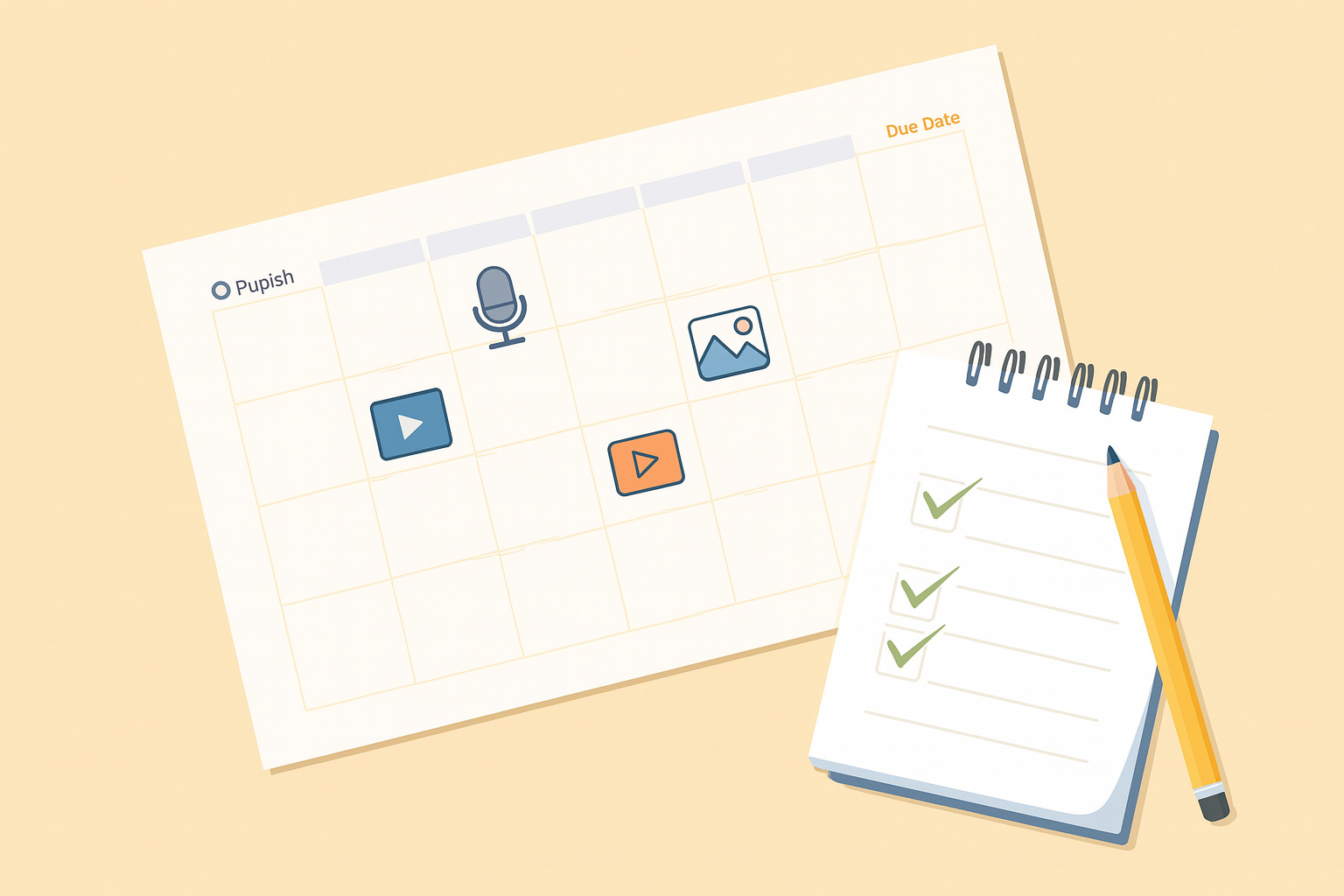
Why a Strategy is Crucial for Event Marketers
In the event world, your content strategy dictates how you engage attendees before, during, and after an event. It's the difference between sending a single "Register Now" email and building a multi-channel campaign that generates buzz for weeks. For a corporate conference, our strategy would involve pre-event articles on maximizing ROI, during-event content captured via our AI Photo Booths showcasing attendee engagement, and post-event case studies proving the event’s success. This turns a one-time event into a year-long marketing asset. To ensure your efforts align with your overall business objectives, explore how to master your social media content strategy. This integration is a core component of modern content marketing best practices.
How to Build and Use Your Content Strategy
An effective strategy is a living document, not a file that gathers dust. It requires upfront planning and consistent iteration to remain effective.
- Align Goals with Business Objectives: Start by defining what success looks like. Is your goal to generate leads for your event tech, increase brand awareness for your annual conference, or drive post-event engagement? Every piece of content should map directly back to one of these high-level objectives.
- Establish Content Pillars: Identify 3-5 core themes or topics where your brand has expertise. For us, these are "Experiential Marketing ROI," "AI in Event Technology," and "Audience Engagement Strategies." These pillars will be the foundation for all your content ideas.
- Plan Your Calendar: Create a content calendar that plans your output at least 3-6 months in advance. This allows for thoughtful creation, proper resource allocation, and strategic alignment with key industry events or product launches.
- Incorporate Repurposing: Don’t let great content die after one use. Plan from the start to repurpose a keynote presentation into blog posts, social media clips, and a downloadable guide. This maximizes the value of every content asset.
- Schedule Regular Reviews: We recommend holding monthly or quarterly strategy meetings to review performance metrics, assess what’s working, and pivot your plan based on data, not assumptions.
3. Create High-Quality, Valuable Content
Once you know who you're talking to, the next step is to give them something genuinely worth their time. High-quality content isn't just about avoiding typos; it's about creating a resource that solves a problem, answers a burning question, or provides unique entertainment. This is the cornerstone of effective content marketing best practices. Your goal is to deliver something so useful that your audience feels compelled to engage, save, and share it.
This principle means going beyond surface-level advice. It involves deep research, expert writing, and compelling design to present information that offers a fresh perspective. Think of standout content like Moz's comprehensive SEO guides or Shopify's detailed e-commerce tutorials. They don't just rehash old ideas; they build a library of expertise that becomes the go-to resource in their niche, establishing unparalleled authority and trust.
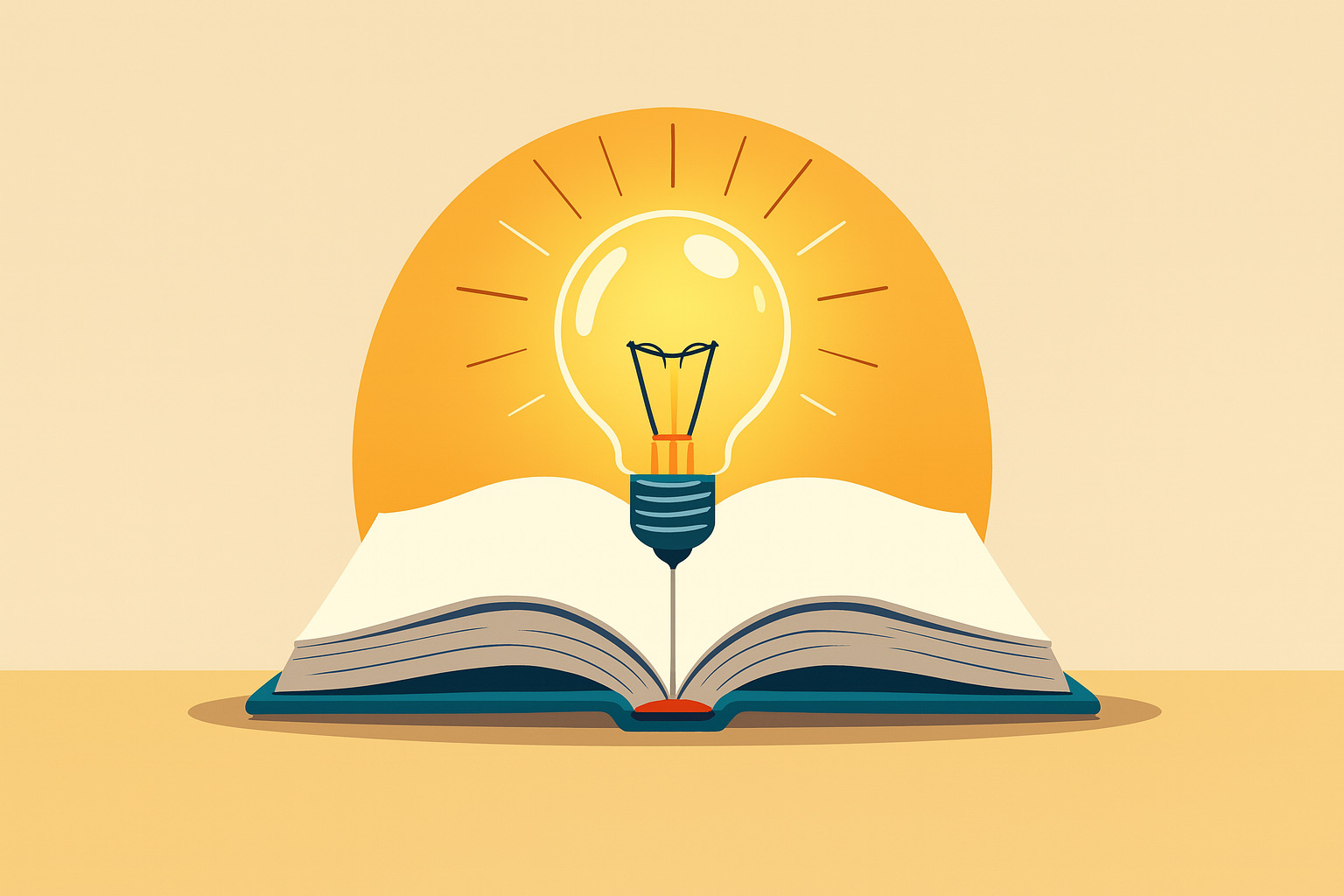
Why Quality Content is a Game-Changer for Event Marketers
For us in the event industry, quality content is our digital handshake. An event producer planning a high-stakes user conference needs more than a generic "how-to" guide. They need a detailed case study on maximizing sponsor ROI with interactive tech or an in-depth analysis of post-event engagement strategies. This is where we can stand out. Instead of a simple blog post, we create downloadable toolkits with templates for measuring event sentiment or an original report on AI's impact on photo booth experiences. Providing this level of value demonstrates our expertise and builds the confidence needed for someone to trust us with their event.
How to Create Content That Delivers Real Value
Creating exceptional content requires a strategic and sustained effort. It's about aiming to be the best answer to your audience's question.
- Focus on '10x' Content: Popularized by experts like Rand Fishkin, the "10x content" framework challenges you to create something ten times better than the highest-ranking result for a given topic. This means being more comprehensive, better designed, and more authoritative.
- Incorporate Originality: Don't just curate; create. Include original data from your own surveys, exclusive quotes from industry leaders, or detailed case studies from your events. This unique information can't be found anywhere else, making your content a primary source.
- Invest in Presentation: Even the best information can fall flat if it's poorly presented. Invest in professional editing for clarity and tone, and use high-quality design, images, and formatting to make your content scannable and visually appealing.
- Update and Refresh: Evergreen content needs regular maintenance. We recommend reviewing and updating your most important pieces at least annually to add new insights, refresh data, and ensure all information remains accurate and relevant.
4. Optimize Content for Search Engines (SEO)
Creating amazing content is only half the battle; ensuring it gets discovered is the other. This is where search engine optimization (SEO) becomes a non-negotiable part of your content strategy. SEO is the practice of structuring and enriching your content so that search engines like Google see it as the best possible answer to a user's query, ranking it higher in search results. For a comprehensive strategy, these are content marketing best practices you simply cannot ignore.
Optimizing for search isn't about "tricking" the algorithm. It's about signaling relevance and authority. When an event planner searches for "virtual photo booth engagement ideas," a well-optimized article will align perfectly with their search intent, using the right language, structure, and technical signals to earn that top spot. This drives consistent, high-intent organic traffic directly to your brand.
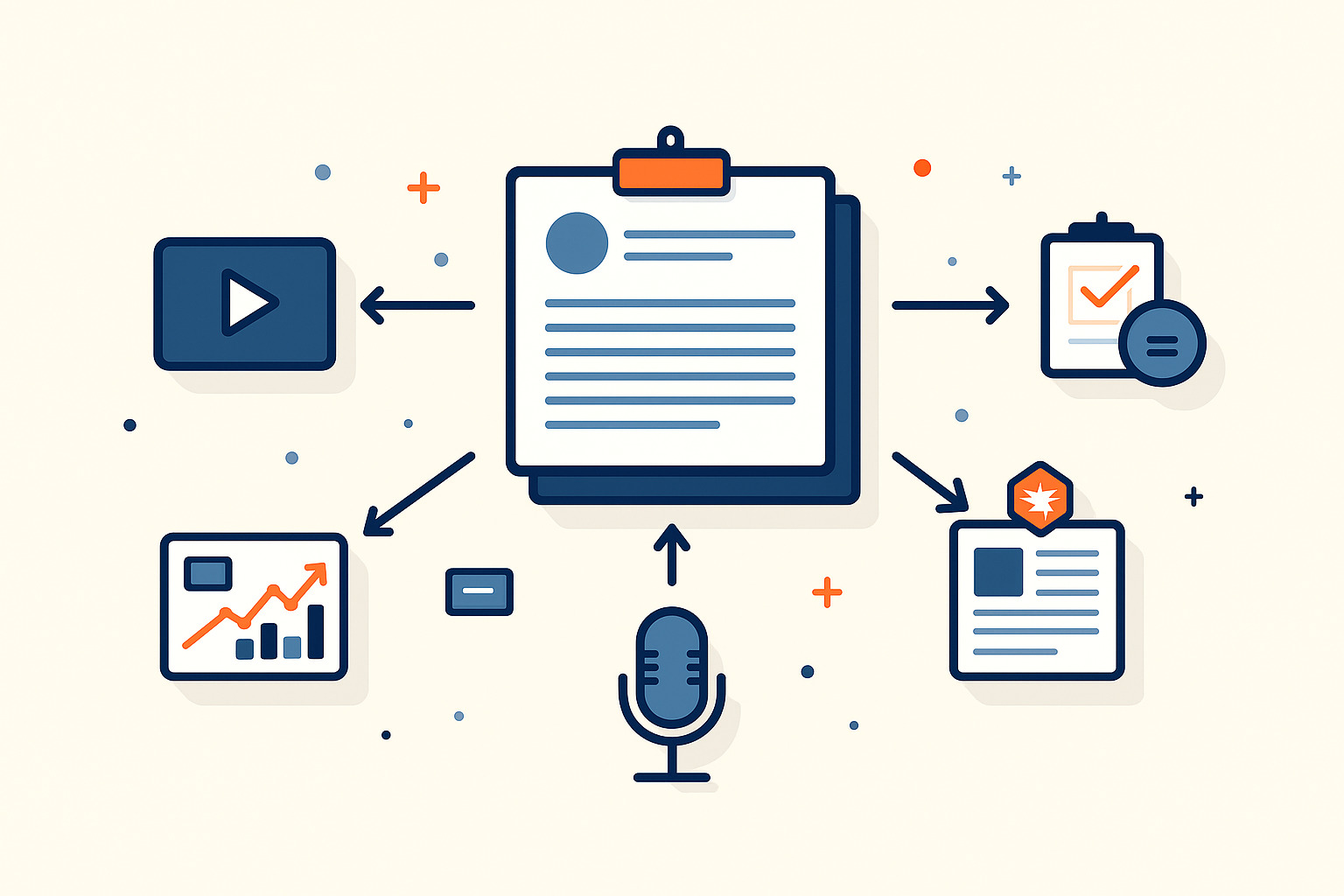
Why SEO is Essential for Event Tech Marketers
In the competitive event technology space, your potential customers are actively searching for solutions. An HR leader looking for "hybrid event team-building activities" or a brand manager researching "experiential marketing ROI" is a high-value lead. By optimizing our content, we meet them at the exact moment of their need. When they search for "AI photo booth for conferences," our goal is to be the first result they see, offering a comprehensive guide that not only answers their question but also showcases our expertise and technology. This turns a simple search into a powerful lead-generation opportunity.
How to Implement SEO for Your Content
Integrating SEO into your workflow ensures every piece of content works harder for you. It requires a systematic approach from planning to publication.
- Strategic Keyword Research: Use tools like Ahrefs or Semrush to find keywords your personas are using. Focus on terms with clear commercial intent, like "conference photo booth rental," not just informational queries.
- On-Page Optimization: Place your primary keyword in the title tag, meta description, and H1 heading. Use variations and related terms naturally throughout the body copy and in subheadings (H2s, H3s).
- Build Internal Links: Link from your new article to other relevant content on your site. This helps search engines understand the relationships between your pages and spreads authority across your domain.
- Prioritize User Experience: Ensure your pages load quickly and are mobile-friendly. Google prioritizes sites that provide a seamless user experience, which is critical for event professionals often working on the go.
5. Maintain Consistent Publishing Schedule
One of the most powerful yet frequently overlooked content marketing best practices is maintaining a consistent publishing cadence. This means creating and distributing content at predictable intervals, whether it's daily, weekly, or bi-weekly. A regular schedule transforms your content from a series of random posts into a reliable resource your audience can depend on, building trust and anticipation over time.
Consistency signals to both your audience and search engines that your brand is active, authoritative, and committed. Think of it like a television series versus a one-off movie; the series builds a loyal following by showing up at the same time each week. For event professionals, this reliability is crucial. A consistent flow of content keeps your brand top-of-mind between events, nurturing leads and ensuring you're the first call when they're ready to plan their next experience.
Why Consistency is Critical for Event Marketers
In the event world, momentum is everything. A consistent publishing schedule helps maintain that energy before, during, and after an event. An event producer planning a major conference needs a steady stream of vendor spotlights, speaker announcements, and logistical tips in the months leading up to it. Similarly, an HR manager running a series of virtual employee engagement events needs a continuous flow of ideas and success stories.
By delivering valuable content on a regular basis, you become a trusted partner in their planning process. This approach helps build an engaged community that not only attends your events but champions your brand. It’s about being a constant source of value, not just a one-time service provider.
How to Build and Maintain Your Publishing Schedule
Creating a sustainable schedule requires planning, not just willpower. It’s about building a system that works for your team.
- Choose a Manageable Frequency: Start with a cadence you know you can maintain. It’s far better to publish one high-quality piece of content every week than to publish daily for a month and then burn out.
- Batch Create Your Content: Dedicate specific blocks of time to create multiple pieces of content at once. You can film several video tips, write a month's worth of blog posts, or design social graphics in a single focused session.
- Build a Content Backlog: Always aim to have several pieces of content ready to go in a "backlog." This provides a crucial buffer for busy periods, ensuring you never miss a scheduled post when unexpected client demands or event-day emergencies arise.
- Use Scheduling Tools: Leverage platforms like CoSchedule, Buffer, or HubSpot to schedule your content weeks or even months in advance. This automates the distribution process and frees up your team to focus on creating the next batch of valuable assets.
6. Diversify Content Formats and Types
Relying on a single content format, like blog posts, is like only bringing one type of lure on a fishing trip. You might catch something, but you're ignoring a vast portion of the lake. One of the most impactful content marketing best practices is to diversify your content formats. This means creating a strategic mix of blog posts, videos, podcasts, infographics, webinars, and interactive tools to cater to different audience preferences, learning styles, and consumption habits.
This multifaceted approach maximizes your reach and engagement across various platforms. Some members of your audience prefer to read in-depth articles during their workday, while others would rather watch a quick tutorial on YouTube or listen to a podcast during their commute. By offering content in multiple formats, you meet your audience where they are, making it easier for them to engage with your brand on their own terms. This strategy, famously championed by figures like Gary Vaynerchuk, ensures your core message resonates as widely as possible.
Why Format Diversity is Essential for Event Marketers
In the event world, format diversity isn't just a good idea; it's a competitive necessity. Consider the lifecycle of a single corporate conference. Before the event, you might use short, snappy social media videos and influencer interviews to build hype. During the event, your focus shifts to live-streamed keynotes and real-time photo galleries from your AI photo booth to drive virtual engagement. Post-event, that content gets a new life as polished case studies, detailed blog recaps, and data-rich infographics showcasing ROI.
This approach ensures you have the right asset for every stage of the attendee journey. A potential sponsor will respond better to a downloadable PDF case study, while a potential attendee might be swayed by a high-energy video recap. By diversifying, we create multiple touchpoints that reinforce the value and excitement of our events.
How to Implement Content Diversification
Effectively diversifying your content requires a strategic, not haphazard, approach. It's about smart repurposing and understanding what works where.
- Start with a Pillar Piece: Create one significant piece of content, like an in-depth research report or a comprehensive webinar. This becomes your "pillar" from which you can carve out numerous smaller assets.
- Repurpose Strategically: That webinar can be turned into a series of blog posts, short video clips for social media, an audiogram for a podcast feed, and a visually appealing infographic summarizing the key stats. This maximizes your investment in the original piece.
- Analyze Performance by Format: Use your analytics to track which formats resonate most with your audience on which platforms. Does video outperform static images on Instagram? Do long-form guides drive more qualified leads than short posts? Let data guide your future creation efforts.
- Align Format with Platform: Don’t just post the same thing everywhere. Tailor your content to the platform’s native experience. For example, use vertical video for Instagram Reels and TikTok, professional long-form video for YouTube, and interactive polls or carousels on LinkedIn.
7. Leverage Data and Analytics for Optimization
Guesswork has no place in a modern content strategy. One of the most critical content marketing best practices is leveraging data and analytics to continuously refine your approach. This means moving beyond vanity metrics and using hard data to understand what resonates with your audience, drives engagement, and ultimately contributes to your business goals.
A data-driven strategy allows you to make informed decisions about everything from topic ideation to content distribution. By analyzing performance, you can double down on what works, prune what doesn't, and justify your marketing spend with concrete results. It’s the difference between navigating with a compass versus navigating with a precise, real-time GPS that adapts to changing conditions.
Why Data is Crucial for Event Marketers
In the event marketing industry, data is our lifeline. We need to know which pre-event blog posts are driving registrations, what social media content generates the most buzz during an event, and which post-event case studies are converting leads into customers. For instance, analyzing user behavior on a landing page for a new AI photo booth can reveal whether visitors are more interested in ROI-focused testimonials or creative brand activation ideas.
This insight allows us to optimize our content to directly address the questions our ideal clients are asking. To truly master how to measure the effectiveness and impact of your content initiatives, consider consulting The Ultimate Guide to Content Marketing Analytics for a deeper dive into the metrics that matter most.
How to Implement a Data-Driven Content Strategy
Integrating analytics into your workflow is a systematic process that transforms raw numbers into actionable intelligence.
- Set Up Your Measurement Tools: Ensure you have Google Analytics 4 (GA4) properly configured with specific event goals, such as form submissions for a demo or downloads of a "Top Event Trends" whitepaper. Tools like BuzzSumo can help track content performance across the web, while heat mapping software like Hotjar shows how users interact with your pages.
- Track Meaningful Engagement Metrics: Look beyond simple page views. Focus on metrics like time on page, scroll depth, conversion rates, and shares. These figures provide a much clearer picture of whether your content is truly connecting with your audience.
- Conduct Regular Content Audits: At least twice a year, perform a full audit of your content inventory. Identify your high-performing "pillar" pieces, content that can be updated and refreshed, and low-performing assets that can be retired or redirected.
- Create Monthly Performance Reports: Establish a simple dashboard to track key performance indicators (KPIs) month-over-month. Share these reports with your team to foster a culture of accountability and continuous improvement, ensuring every piece of content serves a strategic purpose.
8. Focus on Storytelling and Brand Narrative
Facts inform, but stories connect and persuade. One of the most powerful content marketing best practices is to move beyond simply listing features and benefits and instead wrap your message in a compelling narrative. Storytelling transforms dry information into an engaging, memorable experience that resonates emotionally with your audience, making your brand and its message unforgettable.
At its core, brand storytelling is about creating a cohesive narrative across all your marketing channels. It’s about defining your mission, showcasing your values, and highlighting the journey of your customers. Think of brands like Dove with its "Real Beauty" campaign or Patagonia's unwavering commitment to environmental activism. They don't just sell products; they sell an identity and a purpose that their audience wants to be a part of. This is the essence of building a brand that people truly care about.
Why Storytelling Is Essential for Event Marketers
For those of us crafting event experiences, storytelling is the lifeblood of engagement. An event, whether a corporate conference or a brand activation, is a live story unfolding in real time. The narrative begins with your pre-event promotion, builds during the event itself, and continues long after with post-event content. By weaving a clear narrative, you transform attendees from passive observers into active participants in your brand's story.
For example, a trade show booth is not just a physical space; it’s a chapter in your brand's narrative. Using an AI photo booth doesn't just create fun pictures; it captures moments where attendees become the heroes of their own experience with your brand. This user-generated content then becomes a powerful asset, telling authentic stories that amplify your message far beyond the event floor.
How to Weave Narrative into Your Content
Integrating storytelling isn't about writing fiction; it's about framing facts within a relatable structure.
- Make Your Customer the Hero: A common mistake is positioning your brand as the hero of the story. Instead, follow the framework popularized by Donald Miller's StoryBrand and make your customer the hero. Your brand is the guide, the trusted advisor (like Yoda to Luke Skywalker) who equips the hero with the tools and knowledge they need to overcome their challenges and succeed.
- Embrace the Hero's Journey: This classic narrative structure (challenge, struggle, resolution) is hardwired into our psychology. Start with your customer's pain point (the challenge), show how they use your solution to navigate obstacles (the struggle), and end with their success (the resolution). Customer success stories and case studies are perfect for this format.
- Use Sensory and Emotional Language: Great stories create vivid imagery. Describe the "buzz of the conference floor," the "relief of a solved problem," or the "excitement of a new connection." This helps your audience feel the experience, not just read about it, creating a much deeper and more lasting connection to your message.
9. Implement Strategic Content Distribution
Creating exceptional content is only half the battle; ensuring it reaches the right people is the other, equally critical half. One of the most vital content marketing best practices is to move beyond a "publish and pray" mentality. Strategic content distribution is the process of systematically sharing your content across a mix of channels to maximize its reach, engagement, and impact. It involves a planned approach to owned, earned, and paid media, ensuring your message connects with your audience wherever they are.
This isn’t about just blasting a link across every social platform. It’s about understanding the unique ecosystem of each channel and tailoring your content to fit. A detailed white paper might become an insightful LinkedIn article, a series of Twitter threads, a visually engaging Instagram carousel, and a short-form video for TikTok. This multi-pronged approach amplifies your core message, reinforcing your brand’s authority and extending the life of every content asset you create.
Why Strategic Distribution is Crucial for Event Marketers
For event marketers, strategic distribution is how you build pre-event hype, engage attendees during the event, and maintain momentum long after it ends. Think about the assets generated from a single conference: keynote recordings, panel discussions, and user-generated content from a photo booth. Each piece can be repurposed and distributed to different segments of your audience. A CIO might engage with a data-driven LinkedIn post, while a marketing manager might share an exciting sizzle reel on their Instagram.
Distributing this content effectively turns a one-time event into a continuous marketing engine. This is particularly true for engaging assets like photos and videos from event activations. For more on this, discover how you can boost event engagement with a digital photo booth.
How to Build Your Content Distribution Strategy
A powerful distribution plan is proactive, not reactive. It should be built directly into your content creation workflow.
- Map Channels to Personas: Before you publish, identify which channels your buyer personas frequent. A B2B tech professional will be on LinkedIn, while a community event organizer might be more active in Facebook Groups. Match the channel to the audience.
- Embrace the POEM Framework: Balance your efforts across Paid (social ads, PPC), Owned (your blog, email list, social profiles), and Earned media (guest posts, influencer mentions, PR). A healthy mix ensures both immediate visibility and long-term authority.
- Repurpose and Nativize: Tailor content for each platform. Condense a blog post into a quick-tip Twitter thread. Turn key stats into a shareable infographic for Pinterest. Record a short video summarizing the main points for Instagram Stories. The content should feel native to the platform.
- Track and Optimize: Use UTM parameters and platform analytics to track which channels drive the most traffic, engagement, and conversions. Double down on what works and experiment with new channels to continually refine your distribution model.
10. Build and Nurture Community Engagement
One of the most powerful content marketing best practices is to move beyond one-way communication and actively cultivate a community around your brand. This means creating a space where your audience can connect, share, and interact not just with you, but with each other. Community engagement transforms passive consumers into active participants and loyal advocates.
This practice involves fostering meaningful interactions across all your channels, from blog comments and social media conversations to dedicated forums or groups. By building a thriving community, you generate invaluable user-generated content, gain direct feedback, and create a powerful moat around your brand that competitors cannot easily replicate. It’s about making your audience feel seen, heard, and valued.
Why Community is Crucial for Event Marketers
For us in the event and experiential marketing world, community is the crux of engagement. A successful conference or brand activation doesn't just end when the doors close; its impact is sustained by the community it creates. Fostering this connection before, during, and after an event extends its lifecycle and amplifies its ROI.
An engaged community provides a built-in audience for future events, offers a focus group for new ideas, and turns attendees into year-round brand ambassadors. An internal company event, for example, can use a digital photo booth to create a shared digital album, fostering connection and dialogue among employees long after the event concludes. This turns a single moment into a lasting cultural touchstone.
How to Build and Nurture Your Community
Building a community is a long-term commitment that requires consistency and genuine interaction. It's less about selling and more about facilitating connection.
- Be Responsive and Proactive: Don't just post content; engage with the conversation it sparks. Respond to comments and messages promptly and thoughtfully. Ask open-ended questions in your content to encourage discussion.
- Showcase Your Members: Feature user-generated content (with proper credit) to make your community members feel like stars. This not only validates their participation but also provides you with authentic social proof.
- Offer Exclusive Value: Create content or host events exclusively for your community members, such as live Q&A sessions, behind-the-scenes looks, or early access to new products or event tickets. This rewards their loyalty and encourages others to join.
- Establish a Central Hub: While community can exist across platforms, creating a dedicated space like a Facebook Group, Slack channel, or private forum gives your members a central place to connect and strengthens their sense of belonging.
Top 10 Content Marketing Best Practices Comparison
ItemImplementation ComplexityResource RequirementsExpected OutcomesIdeal Use CasesKey AdvantagesKnow Your Audience and Create Buyer PersonasMedium - time-intensive researchModerate - research tools, interviewsImproved content relevance, higher engagementTargeted marketing, personalized messagingGuides strategy, reduces wasted spendDevelop a Comprehensive Content StrategyHigh - extensive upfront planningHigh - planning and coordinationConsistent messaging, efficient resource useLong-term brand building, coordinated campaignsClear direction, better performance trackingCreate High-Quality, Valuable ContentHigh - requires skilled creationHigh - expert writers, designersIncreased trust, thought leadership, SEO benefitsAuthority building, competitive differentiationBuilds credibility, drives engagementOptimize Content for Search Engines (SEO)Medium - ongoing optimizationModerate - SEO tools, expertiseIncreased organic traffic, sustainable visibilityDriving organic search traffic, long-term growthCost-effective, high purchase intent targetingMaintain Consistent Publishing ScheduleMedium - workflow managementModerate to high - resources for frequent publishingImproved SEO, audience loyalty, brand visibilityBrands needing steady audience engagementBuilds expectations, improves ROIDiversify Content Formats and TypesHigh - varied production skillsHigh - multi-format tools and skillsBroader reach, higher engagement across audiencesMulti-platform campaigns, diverse audiencesMaximizes ROI, caters to preferencesLeverage Data and Analytics for OptimizationMedium to high - requires expertiseModerate to high - analytics toolsImproved content performance, evidence-based decisionsData-driven marketing, content performance improvementMaximizes ROI, reduces guessworkFocus on Storytelling and Brand NarrativeMedium - creative skills neededModerate - skilled writersEmotional connections, increased brand loyaltyBrand differentiation, emotional engagementBuilds trust, memorable messagingImplement Strategic Content DistributionMedium to high - multi-channel coordinationModerate to high - platform tools and managementMaximized reach, diverse traffic sourcesMulti-channel marketing, audience growthIncreases visibility, improves ROIBuild and Nurture Community EngagementHigh - requires ongoing interactionHigh - dedicated community managersStrong brand advocacy, increased engagementBrands focusing on loyal communitiesBuilds loyalty, organic word-of-mouth marketing
Turn Your Next Event into a Content Powerhouse
The journey through these content marketing best practices reveals a powerful, interconnected truth. Success isn't about mastering a single tactic. It's about building a holistic, integrated system where every element, from audience research to analytics, works in concert to achieve your goals. We've explored the foundational pillars: knowing your audience, crafting a robust strategy, creating high-value content, and optimizing for discovery. We've seen how consistency, diversification, and strategic distribution transform good content into great results.
But the true mastery of these principles lies in their application. It's about moving from theory to tangible, measurable action. The most successful brands don't just follow a checklist. They cultivate a content-centric culture. This is where the real magic happens, especially in the dynamic world of events. Events are no longer just a moment in time. They are the ultimate content creation engine, a vibrant epicenter for capturing authentic stories, user-generated gold, and direct audience feedback. This is a critical shift in perspective. Instead of viewing an event as a finish line, we must see it as the starting block for months of powerful, resonant marketing material.
From Principles to Performance: Your Actionable Next Steps
To truly harness the power of these content marketing best practices, we must bridge the gap between planning and execution. It's time to activate what we've learned and turn your next event into a self-sustaining content ecosystem.
Here’s how to start putting these ideas into practice immediately:
- Revisit Your Strategy with an "Event-First" Lens: Look at your existing content strategy. How can you integrate your next event as a central pillar? Plan pre-event content to build hype, at-event content to capture the energy, and post-event content to extend the conversation and nurture leads.
- Empower Your Audience as Co-Creators: The most compelling content often comes directly from your attendees. By integrating interactive technologies like our AI Photo Booths, you’re not just providing a fun experience. You are strategically deploying a user-generated content (UGC) machine. Every branded photo or video shared becomes an authentic testimonial, amplifying your reach organically.
- Capture Actionable Data in Real-Time: Don't wait for post-event surveys. We believe in embedding data collection directly into the experience. Use tools like our interactive Survey Experiences to gather live feedback on sessions, product demos, or brand sentiment. This turns passive attendees into active participants and provides you with rich, immediate data to refine your messaging.
- Atomize Your Event Content: One keynote speech or panel discussion can be repurposed into dozens of assets. Break it down into short video clips for social media, insightful quotes for graphics, a detailed blog post summarizing the key takeaways, and a downloadable transcript or summary for lead generation. This is the essence of working smarter, not harder.
The Lasting Impact of an Integrated Approach
Ultimately, weaving these content marketing best practices into the fabric of your event strategy is about creating a flywheel of engagement. Each piece of content you generate and distribute fuels the next, building momentum and strengthening your brand's narrative over time. It's how you turn a three-day conference into a year-long conversation.
At Snapbar, we live at this intersection of events and content. We build the tools that empower brands to capture these moments and transform them into measurable marketing ROI. We've seen firsthand how a well-placed, engaging experience can become the most valuable content-gathering tool in your arsenal. The future of marketing isn't just about creating content; it's about creating experiences that produce content. When your audience becomes your best storyteller, you've unlocked a level of authenticity and reach that traditional advertising simply can't buy.

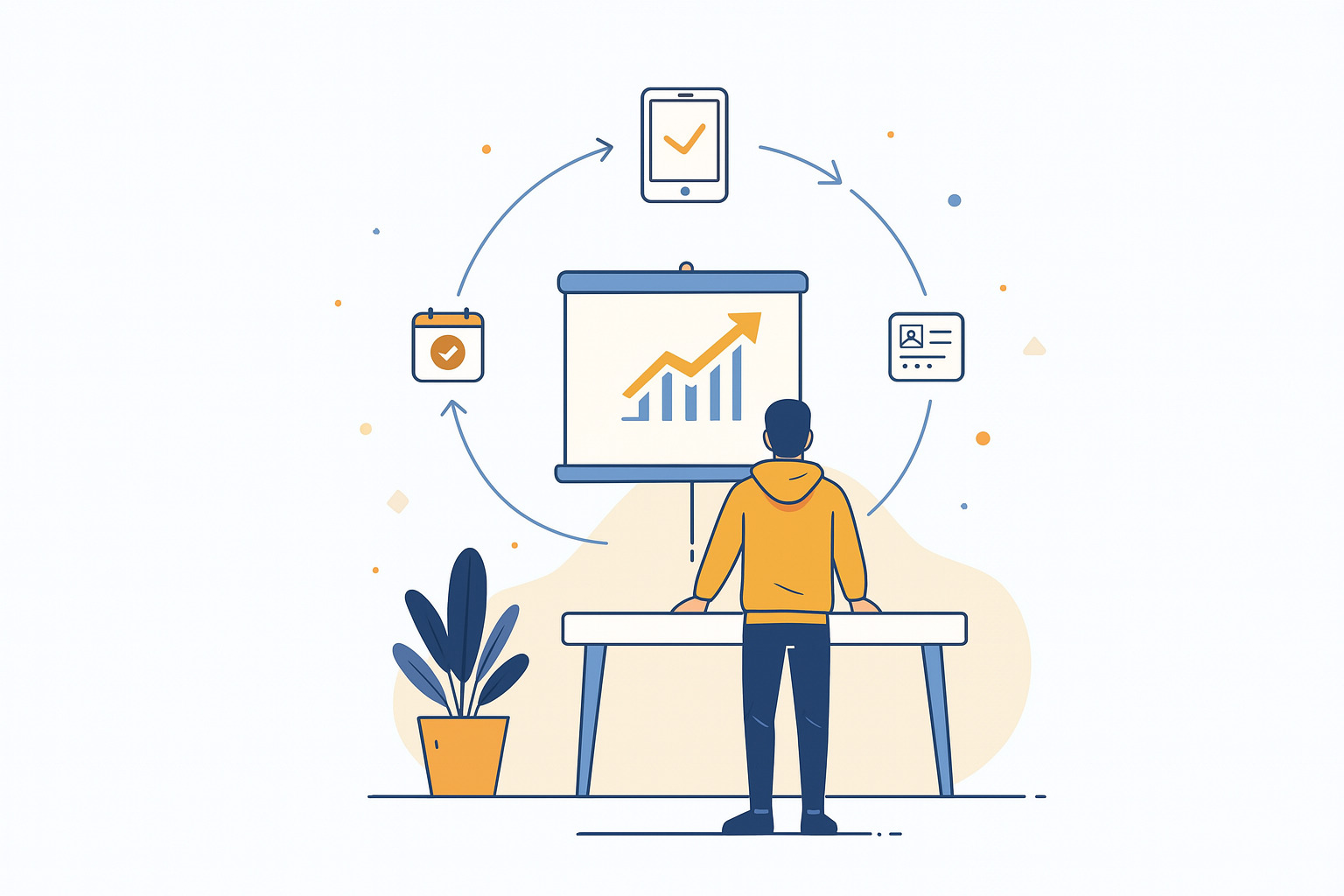








-p-500.webp)



.jpeg)















